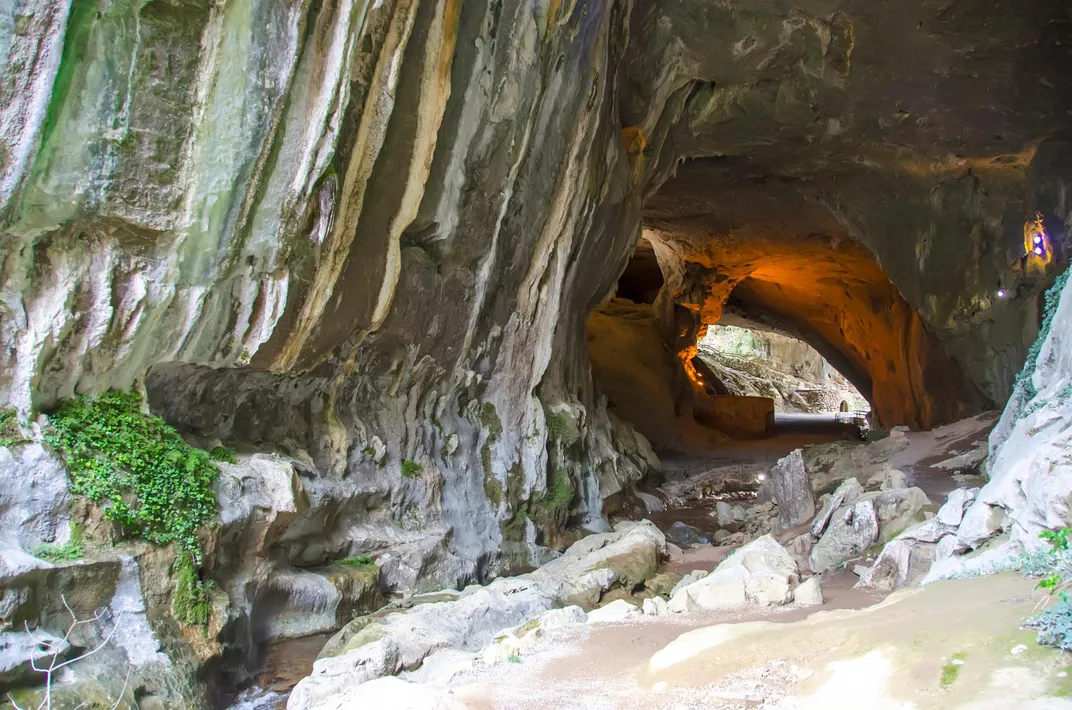Visit the Site of the Biggest Witch Trial in History
Over 7,000 people were accused of witchcraft in Basque Spain
/https://tf-cmsv2-smithsonianmag-media.s3.amazonaws.com/filer/bd/24/bd245713-6bea-49d9-8f79-a731dc1fca3b/akelarra.jpg)
Poor Inesa Gaxen. After she escaped the witch trials in France, she fled to Spain and fell victim to them again in the Basque country, during what would become history's biggest witch hunt.
“The poor woman had to go through a trial twice,” Jorge Abril Sanchez, a researcher at the University of New Hampshire specializing in Basque culture and demonology, tells Smithsonian.com. “She was first accused of witchcraft in France. She went to trial and was pardoned by the Catholic Church. But then she moved to the Basque country and she was accused of witchcraft again there [in 1611].”
According to Sanchez, Gaxen defended use of the Basque language and was an independent woman in France, which made authorities suspicious of her. She was tortured when she was arrested in France and had a clear physical handicap as a result of her time in prison. That must have made her stand out. When she moved to Spain, she continued with her defense of the Basque language, Sanchez said, making her a clear target—again—for the accusers.
Witch trials were not new in Europe, where they'd been occurring sporadically since the 1400s—and they became so popular that they continued through the late 1700s. But between 1609 and 1614, up to 7,000 people were accused of witchcraft in Basque Spain. Fueled by suspicion from the Spanish Inquisition and, Sanchez says, “a combination of sociopolitical conditions”—like men leaving for months at a time to work (which led to adultery claims), a strong folkloric belief, and the arrival of gypsies in the Basque country, women were called witches in unprecedented numbers. At least 2,000 of those accused were investigated and tortured, and 11 died. Six were burned at the stake and five were tortured to death in prison, but officials made sure to burn symbolic effigies of the ones who died in jail.
To put it in perspective, although 20 people were executed during the Salem witch trials, only about 200 people were investigated. And while Salem mostly targeted women, the Basque trials were equal opportunity—aristocrats, men, clerics, and children were among the accused. “It wasn’t so much about misogyny but about the eradication of heresy,” says Sanchez.
Prior to the trials, Basque country had long been at risk of cries of witchcraft. Local accusations pop up in history back to the 1400s, but those are isolated cases. Then, in 1609, about 600 people were tried in France and up to 100 were executed. Terrified residents fled across the border to Spain’s Basque region, which caused widespread panic. In response, local authorities ordered witch trials, calling in the Spanish Inquisition for help. The push to maintain Catholic orthodoxy butted up against the strong sense of mountain folklore in the area. The result? Increased fear of the witches who supposedly populated the region.
In 1611, an inquisitor named Alonso Salazar Frías traveled through the Basque countryside in and around Zugarramurdi in order to collect confessions and pardon witches who renounced evil. He collected 1,802 confessions (which named about 5,000 more people in them) from the “witches” of Zugarramurdi. But he was skeptical, as he had seen no solid evidence of witchcraft while there. When the majority of the confessed retracted their statements, the matter was sent on to the Inquisitor General. He, in turn, ruled in 1614 that all cases be dismissed, bringing an end to the biggest witch trial in history.
The Basque region still holds tight to folklore and mythology, says Sanchez—and that’s part of the reason studying the witch trials is integral to understanding current times.
“We cannot deny the importance of local beliefs,” he notes. “Even though someone tried to eradicate them, they survived until today. It’s important we remember not to make the same mistakes. Eleven people died, most likely for false accusations. It shows what can go wrong if we choose the wrong leaders.”
Those looking to honor that legacy can visit these three sites in Zugarramurdi, Spain.
Cave of Zugarramurdi

Originally sliced into the earth by the Orabidea River’s path, this natural tunnel was the epicenter of suspected witchcraft in Zugarramurdi. It’s known as “the cave of the witches” and once was the spot for nearby residents to enjoy parties, bonfires, rituals, and orgies—and also supposedly create storms and shape-shift into cats. Now, every year on the summer solstice, a feast and festival takes place in the cave. Visitors eat roast lamb (cooked on a stake or spit) and party among bonfires in a rave-like atmosphere, all to honor the regional witching history.
Meadow of Akelarre
This meadow sits at the entrance to the cave of the witches. Locals consider it a gathering place for pagans past, who would stand outside and hold meetings presided over by the devil in goat form. “Akelarre” means “he-goat” in the Basque language. The word has since evolved into aquelarre—meaning any sort of witchcraft-focused meeting, be it a Sabbath celebration or a coven gathering.
Zugarramurdi Witch Museum
Down in the village, not far from the cave, an old hospital has been converted into the Witch Museum. A journey through starts with two videos, one about the region and one detailing the witch hunt as it happened in the 1600s. Exhibits on the first floor cover the beginning of the trials and why they started—all centered around one girl who spilled her coven’s secrets to authorities. The second floor is all about herbalism, spells, and ancestral wisdom.
Planning Your Next Trip?
Explore great travel deals
Smithsonian magazine participates in affiliate link advertising programs. If you purchase an item through these links, we receive a commission.
/https://tf-cmsv2-smithsonianmag-media.s3.amazonaws.com/accounts/headshot/JenniferBillock.png)
/https://tf-cmsv2-smithsonianmag-media.s3.amazonaws.com/accounts/headshot/JenniferBillock.png)